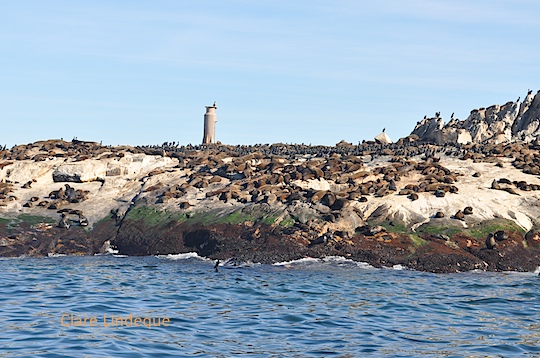[youtube=”http://www.youtube.com/watch?v=4fKSHfaLiRY&w=540″]
I took this (shaky) video on a visit to Seal Island in False Bay in late July 2012 on the Shark Spotters research boat. The island is a granite outcropping of rock about 800 metres long and 50 metres wide, and is about 6 kilometres from Macassar Beach, and fifteen kilometres (my google maps estimate) from Simon’s Town.
It is the main breeding colony for Cape fur seals in this region. Up to 70,000 seals can be found on the island at peak times of year; when I took this video (during winter), there were probably 40-50,000 seals present.When downwind of the island, one can almost taste the seals on the air. It’s pungent – eye-wateringly so.
The island has no soil or plants, but at one stage there was enough guano and African penguin eggs to support a thriving industry harvesting them. Today up to 80 pairs of African penguins breed on Seal Island – a small population compared to the seals, but significant for this at-risk seabird. The highest point on the island is about six metres above the high tide level. Quite a few other species of birds breed at the island and can be seen there.
Remains of human activity include bits of an old radio mast and some huts and other structures from the guano collection days. In the water around the island, great white sharks can be seen during the winter months, predating on young, newly-weaned seals. During the summer months the sharks move inshore and the seals make far more extensive use of the water around the island.
Three cage diving operators have a licence to bring guests to the island.









Comments are closed.